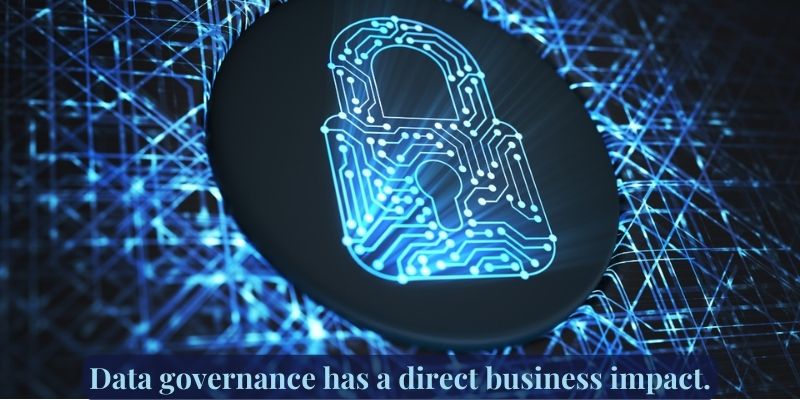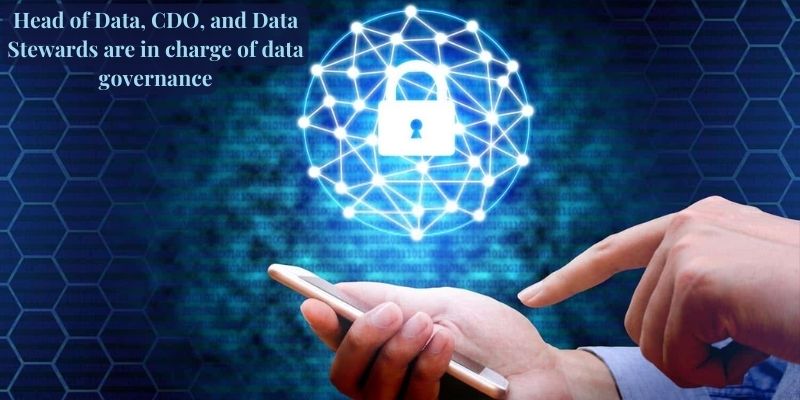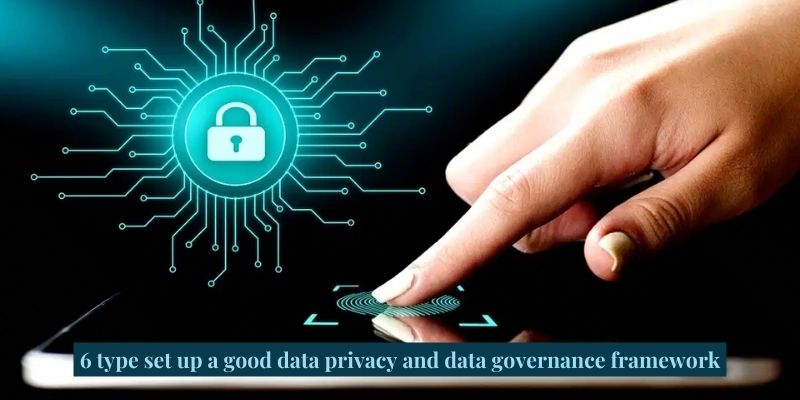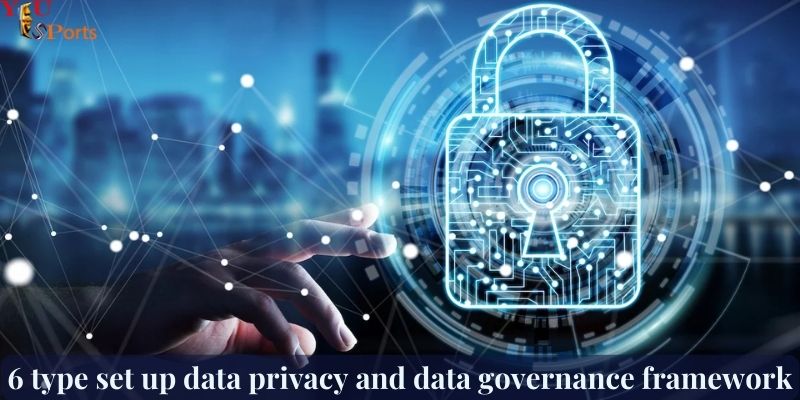A notion in data management is called data governance (data privacy and data governance framework). It serves as an indicator of how much power an organization has on its data. High-quality data, transparency over data pipelines, responsive rights management, and unambiguous responsibility can all help with this control. Data governance refers to the people, procedures, and equipment needed to manage a company’s data in a consistent and ethical manner. I mean to assure availability, usability, consistency, understandability, data integrity, and data security by consistently and properly processing data.
The most complete governance model, for example, for a global bank, will have a strong data-governance council to guide it, a high level of automation with metadata recorded in an enterprise dictionary or data catalog, data lineage traced back to the source for many data elements, and a broader domain scope with ongoing prioritization as enterprise needs change.
A combination of people, process, and software makes up a good data governance and privacy approach. In this article, yeuesports.com will discuss 6 type set up data privacy and data governance framework
Data governance has a direct business impact.
Data governance is more than just the technical procedure that businesses must implement in order to comply with regulations. Naturally, a portion of it is a legal need, and thank God for that, but a clean governance plan can produce important commercial results.

Head of Data, CDO, and Data Stewards are in charge of data governance
Data stewards are typically in charge of putting a framework in place to make sure that important governance criteria are met in businesses. This framework covers a set of regulations and obligations, including naming owners for data assets, regulating analytics system security, and giving data analysts and engineers access rights and security roles. Different companies may have different frameworks and rules.
The work of the data stewards is monitored by heads of data or CDOs who manage data analytics teams. In a monthly or annual committee, they put up a clear plan or strategy to prioritize the work, establish standards, and clearly define roles and duties. Data stewards support the plan and carry out the procedures set forth by the Chief Data Officer or head of data. Utilizing a specialist governance tool, such as Castor, is frequently the focus of good practices.

The advantages of the data stewards’ work have an effect on data governance and the effectiveness of the analytics teams. It increases visibility and aids in decision-making that is of higher caliber. They assist analytics teams by upholding high data quality standards, keeping track of data owners and roles, and strengthening security.
6 type set up a good data privacy and data governance framework
Several bricks are needed to enforce data privacy and data governance framework
- Data Architecture (Storage, Modeling, Visualization) – Data privacy and data governance framework
A business needs a solid foundation, or robust infrastructure, before ever discussing data governance frameworks. The characteristics of the data architecture framework might vary greatly depending on business needs and the company’s data maturity. Which option do you choose for storage: on-site or in the cloud? Data lake or data warehouse? What’s better for modeling, Spark or DBT? in the BI tool or the data warehouse? batch or real-time? In terms of visualization, do you permit everyone to create dashboards, or just data teams? etc.
- Search and Discovery – Data privacy and data governance framework
Making sure the appropriate individuals can locate the pertinent datasets to conduct their analyses or develop their AI model constitutes the initial step of any data governance approach. If you skip this stage, your business will have a lot of Slack inquiries and pointless meetings with the engineering teams. The result is that the organization has numerous duplicate tables, analytics, and dashboards. The resources that are required to carry out the subsequent tasks must be engineered, which takes important time.
- Metadata and Documentation – Data privacy and data governance framework
As soon as you can successfully locate the data. To determine whether it will be useful, you must rapidly comprehend it. Take the dataset “active_users_revenue_2021” as an illustration. There is a “payment” column. Is this column in euros or dollars? Has it been updated recently—this week, last year, or this morning? Does it include information on all active users, or just those in Europe? Will crucial dashboards for the marketing or finance teams be affected if I delete a column? etc.

- Data Quality – Data privacy and data governance framework
You need to have faith that the data is of a high standard now that it is available, accessible, and stored in scalable infrastructure. As a result, there have been a lot of data observability and dependability technologies developed over the past five years. The idea behind data observability is to use automated monitoring, alerting, and triaging to prevent data downtime. Declarative (manually specify thresholds and behavior) and ML-driven (identify abrupt changes in distribution) are the two basic approaches to data quality.
- Security and Access Rights – Data privacy and data governance framework
You must increase security as much as you can because some data may be more sensitive or important than others. Imagine you are a bank and you don’t want any employees to have access to the transaction logs. Access rights must be defined, and managing them effectively can quickly become challenging as the quantity and variety of persons using data increase. There are occasions when you want to grant someone access for both a specified goal and anything else. What happens when one of your employees transitions from the marketing division to the finance division? To fulfill essential security standards, you need a program to handle these rights properly and effectively.
- Compliance and Regulation – Data privacy and data governance framework
This one needs no explanation. You must list all of your assets, report on the use of your personal information, and adhere to numerous laws and regulations. Regulators are currently primarily targeting big organizations, but it won’t be long before they also start fining smaller businesses. A yearly committee helps guide the governance program in the majority of companies.
